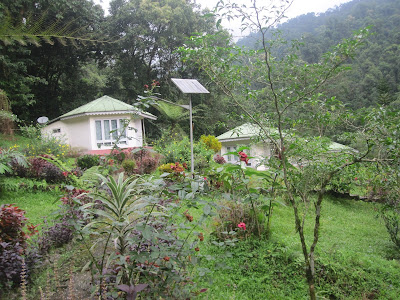Class
Class are template of an object .It contain data , method , function to make the object usable .For example , we create an object “student” , student have some property , like student name ,date of birth ,roll number ect .More over student have an property also called parent name . Then how we should describe “student” object or class ?
Class are template of an object .It contain data , method , function to make the object usable .For example , we create an object “student” , student have some property , like student name ,date of birth ,roll number ect .More over student have an property also called parent name . Then how we should describe “student” object or class ?
class student
{
string student_name;
DateTime date_of_birth;
int roll_number;
string parent_name;
}
Now , the student
class properly describe the student .But class also contain method, function
for specific work. These are called member of the class.
class student
{
string student_name;
DateTime date_of_birth;
int roll_number;
string parent_name;
string parent_name;
void calculate_age()
{
}
}
Now, student_name ,
date_of_birth, roll_number,parent_name, calculate_age all are member of the
class .How we will go some other property of the class. One property is nested
type. That means one class have been nested under another class . We have
already declared how to declare class and we have declare the class “student” .
Now we will declare the “student” class under a class called “school”.
class school
{
string name_of_school;
string address_of_school;
class student
{
string student_name;
DateTime date_of_birth;
int roll_number;
string parent_name;
string parent_name;
void calculate_age()
{
}
}
}
Now , the next comes
, how to use class ?.To use an class we need to create instance of the class
.Each class has an constructor , we need to initialized the constructor. For
Example
student obj = new student();
To understand the
concept , we need some modification of the class , just declare public , we
will get all the property of the object instance.
public class student
{
public string
student_name;
public DateTime
date_of_birth;
public int
roll_number;
public string
parent_name;
public string
parent_name;
public void calculate_age()
{
}
}
student obj = new student();
But why I had
declare public class and member public ? There is a discussion scope and access
level. Generally there are three type of access modifier private , public ,
protected.Other than this , other are friend and protected friend.Now let us
see the role of access modifier.
Public : Can be
access from any where.
Private : Can be
access by the member of the same class only.
Protected : can be
acess by the member of the same class only and inherited from base class.
Friend: Can be
access from , within the assembly.
Example :
public class student
{
string student_name;
DateTime date_of_birth;
int roll_number;
string parent_name;
string parent_name;
void calculate_age()
{
}
}
private class student
{
string student_name;
DateTime date_of_birth;
int roll_number;
string parent_name;
string parent_name;
void calculate_age()
{
}
}
protected class student
{
string student_name;
DateTime date_of_birth;
int roll_number;
string parent_name;
string parent_name;
void calculate_age()
{
}
}
Inheritance
Inheritance is the
feature of the .Net framework , which allow to create a new class with all the
member of previously defined class .For example ,we have defined class A ,, now
inherited class B . All member of class A will come to Clasas B
automatically.The first class is called Base class an second class is called
derived class . In other object oriented programming language allow unlimited
level of inheritance , but .Net frame
work allow only 2nd level inheritance . The main advantage of
inheritance is just copy/implement common functionality of Base class to
derived clasas . Now I am creating an class
public class parent //base class
{
public int
public_member;
public int
public_method(int a, int
b)
{
return (a + b);
}
}
public class child : parent
{
//derived class
}
Notice that , child
class do not have any method .Now I am creating instance of the clind class.
child obj = new child();
obj.public_member;
obj.public_method();
We get both member
of the parent class in child class . Noticed that , member of the parent class
declared public ,so that we can inherit it , only public , protected access
modifier will be available during Inheritance .Here is an example ,
public class Parent
{
private void
Method1()
{
}
protected void
Method2()
{
}
}
public class child : Parent
{
public void
method_call()
{
this.method1();//compliler
through error-inacccable due to protection level
this.Method2.method2();//will
compile & work
}
}
Is there any way ,
that we can define a class that can not be Inherited ?
Yes . there is , the
keyword called “sealed” , seal keyword tells compiler that , this class can not
be inherted . For example
public sealed class Myclass
{
}
Now , I am trying to
Inherit the clasas “MyClasas”
public class MyChild : Myclass
{
}
//error MyChild': cannot derive from
sealed type 'Myclass'
An error will shown
, sealed class can not be inherited , but we can create instance of the seal
class .The question is , what is the use of sealed class ?
Sealed class is
mainly used for security features, so that class cannot be modified.



















